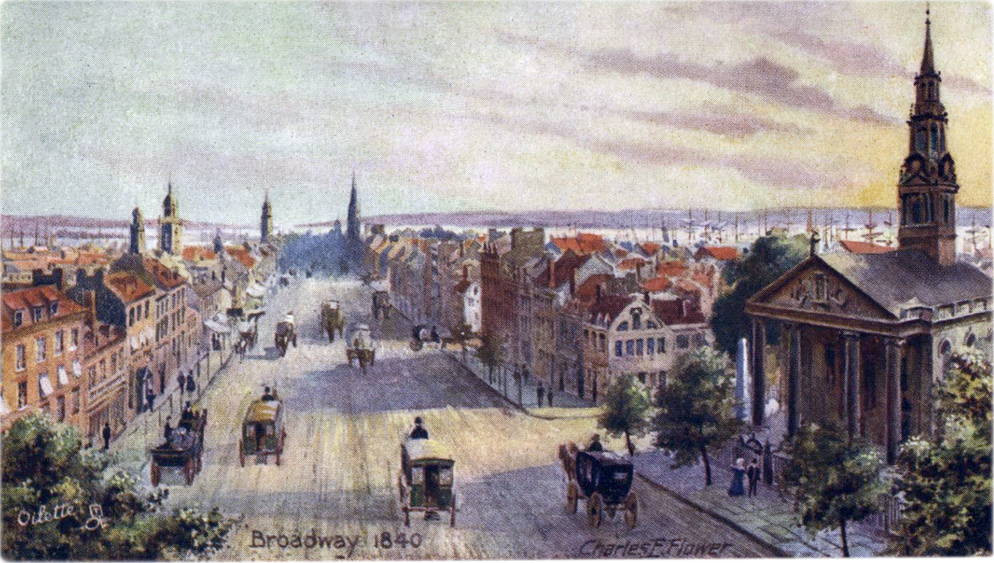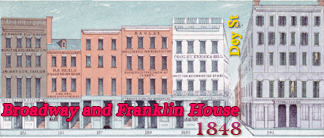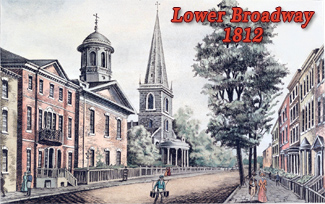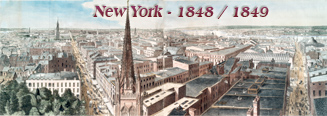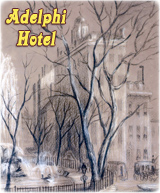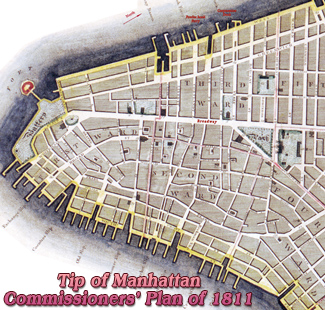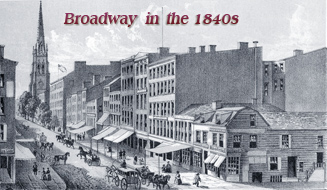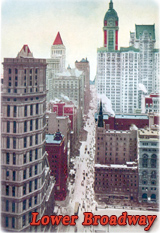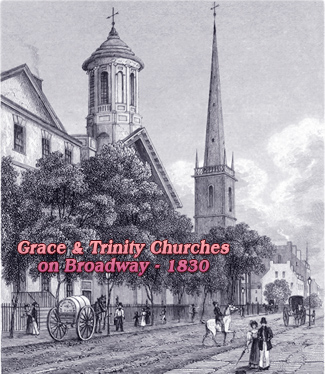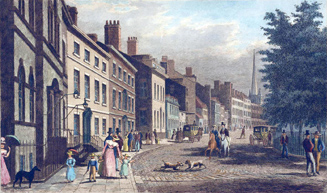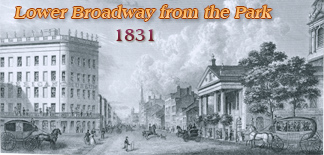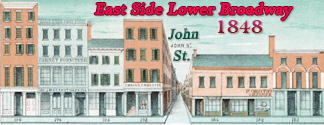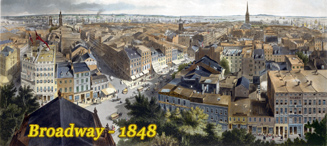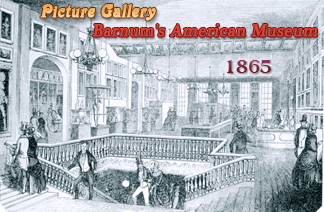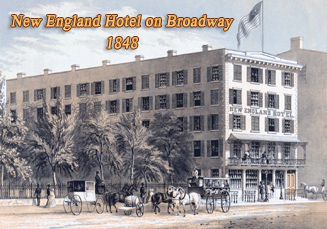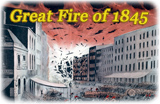In the early 19th century, Lower Broadway was the most important thoroughfare in the City of New York. Its importance increased even further with the transfer of the City Hall to the current palace at City Hall Park. For the section of Lower Broadway from Vesey Street to Chambers Street see More: Broadway at City Hall Park in 19th Century ►
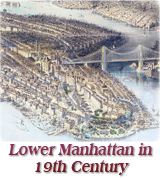 In the
Great Fire of 1845, a great
number of buildings were destroyed. The second
temple of Trinity Church was demolished in 1839 due to structural problems.
The third and current temple was consecrated in 1846. In 1847, the Common
Council granted permission to pave Broadway with square blocks of granite, from
the southerly side of Wall Street to the northerly side of Fulton Street.
In the
Great Fire of 1845, a great
number of buildings were destroyed. The second
temple of Trinity Church was demolished in 1839 due to structural problems.
The third and current temple was consecrated in 1846. In 1847, the Common
Council granted permission to pave Broadway with square blocks of granite, from
the southerly side of Wall Street to the northerly side of Fulton Street.
Throughout the 19th century, Broadway's importance grew year after year, but fashionable venues moved north, especially the theaters and hotels. The up-town movement accelerated in the late 1850s and it included merchants. Broadway was then the back bone of NYC. Among the iconic buildings that moved north on Broadway were Grace Church, Barnum' American Museum and others, including many office buildings.
